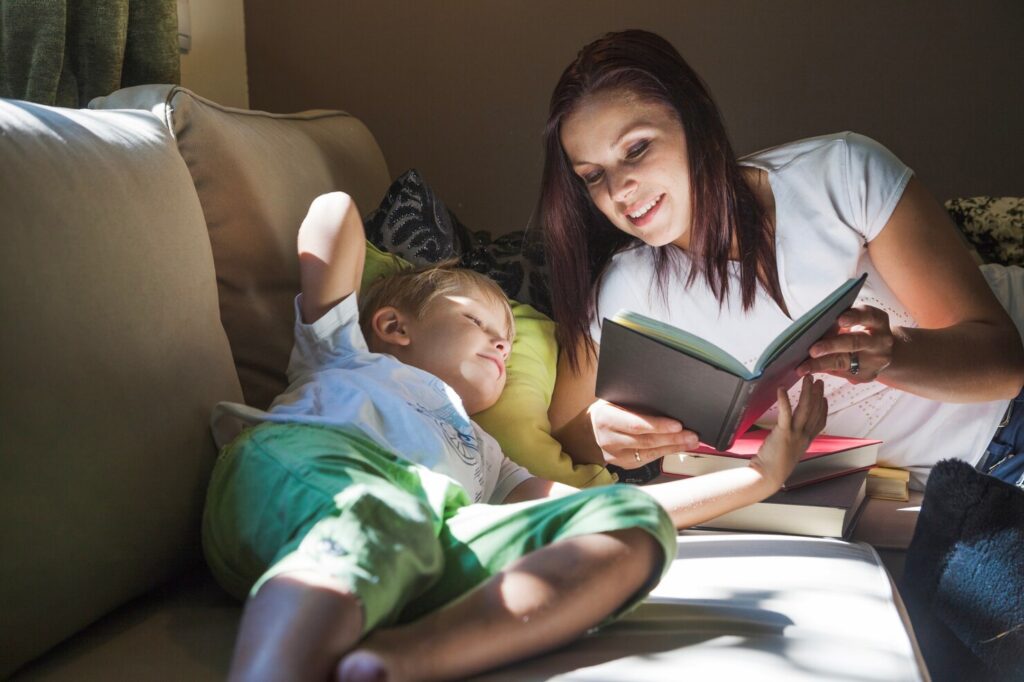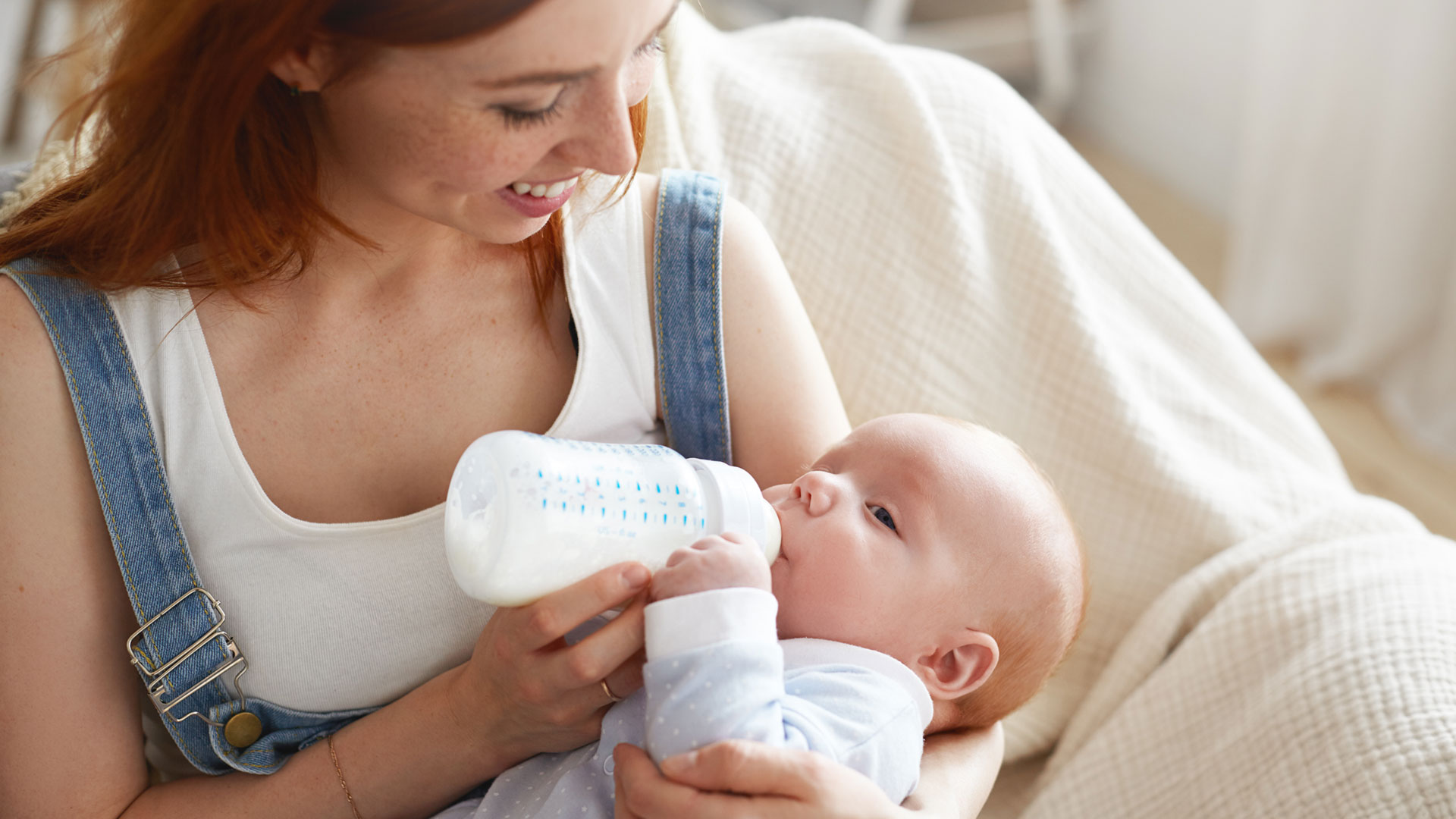Your child’s ability to build a lifetime of healthy habits begins with you. As their primary caregiver, YOU are the most influential human in your children’s lives. This is especially true for the first seven to ten years of a child’s life when their brains and social-emotional development are wired to mimic and learn from primary care providers.
Healthy Habits Start With Primary Caregivers
While your words are certainly important, research repeatedly demonstrates that your actions are what children pay the closest attention to – even unconsciously. Children are keen observers, so what you do often resonates more than what you say – especially if actions and words don’t align.
Creating healthy habits for your child often means modeling those habits yourself in a way that feels achievable and authentic.
Here are five key areas to focus on when fostering healthy habits for your child and family:
1. Practice Daily Foundational Needs: Food, Water, and Sleep
Our bodies rely on essentials – like food, water, and sleep – to function at their physical, mental, and emotional best. Addressing these foundational needs is often the first step toward improving a child’s overall well-being:
- What do they eat every day? Sugar, food dyes, and processed foods can trigger behavioral issues in some children. Encourage more seasonal, fresh, healthy produce and lean protein sources in their diet.
- Is water their primary source of hydration? Water is the healthiest drink for children. Many popular beverages, including fruit juices and sports drinks, often contain high levels of sugar and artificial dyes.
- How much sleep do they get each night (or day for younger kids)? Adequate sleep supports hormone production, neurological growth, immune health, and emotional regulation. Make sure your child’s sleep schedule aligns with their developmental needs, and don’t forget your own rest—a rested caregiver is a more effective caregiver. Have a teenager? Click here to learn more about their sleep needs.
2. Create a Healthy Relationship With Screens
Screens are an unavoidable part of modern life, but managing their use is key. Make screen-time limits a family commitment so your child sees healthy habits in action. Here are some tips:
For details about screens and their effects on children/teens, visit AACAP.org’s page on screen time and children. They recommend the following guidelines:
- For children under 18 months of age, limit screen use to video chatting accompanied by an adult (for example, with a parent who is out of town).
- Between 18 and 24 months, screen time should be limited to watching educational programming with a caregiver.
- For children 2-5, limit non-educational screen time to about 1 hour per weekday and 3 hours on weekends.
- For ages 6 and older, encourage healthy habits and limit activities that include screens.
- Turn off all screens during family meals and outings.
- Learn about and use parental controls.
- Avoid using screens as pacifiers, babysitters, or to manage behavior (like stopping tantrums), as this can establish unhealthy patterns.
- Turn off screens and remove them from bedrooms 30-60 minutes before bedtime.
We also value resources like healthychildren.org, which provides guidance on screens and how to support healthy screen use in your home.
3. Balance Activities With Rest and Relaxation
Modern family schedules are often packed with school, sports, and extracurriculars. While structure is beneficial, overscheduling can lead to stress and burnout for both children and adults. Teach your child the value of downtime by building it into your routine:
- Reevaluate your family calendar and consider dropping activities that aren’t bringing joy or value.
- Encourage unstructured playtime and relaxation.
- Help children balance schoolwork with hobbies and social time to prevent overwhelm.
4. Encourage Physical Activity
Regular movement benefits the body and mind, but it doesn’t have to mean rigorous exercise routines. Find ways to make physical activity enjoyable for your family:
- Take daily walks or bike rides together.
- Spend time outdoors exploring parks, trails, or your own backyard.
- Turn activities like gardening or dancing into fun opportunities to move.
By integrating physical activity into your routine, you’re modeling a healthy lifestyle that’s sustainable and fun.
5. Foster Emotional Resilience and Connection
Healthy habits extend beyond the physical—emotional and mental well-being is just as crucial. Help your child develop resilience and connection through simple, intentional practices:
- Practice gratitude: Share something you’re grateful for during meals or at bedtime.
- Promote open communication: Create a safe space for your child to express their feelings without fear of judgment.
- Strengthen family bonds: Prioritize family dinners, game nights, or other shared activities that foster connection.
- Teach coping strategies: Encourage mindfulness practices like deep breathing or journaling to help manage stress.
Start Small and Build Momentum
Building healthy habits doesn’t have to happen all at once. Focus on one or two changes at a time, and celebrate small successes along the way. Remember, your efforts as a caregiver—no matter how small—have a lasting impact on your child’s well-being.
Pediatric Associates of the Northwest Celebrates Healthy Habits
Every family is unique, and so is every journey toward healthier habits. If you have questions or need guidance, the team at Pediatric Associates of the Northwest is here to help. Schedule an appointment today to discuss your family’s needs and create a plan that works for you.





